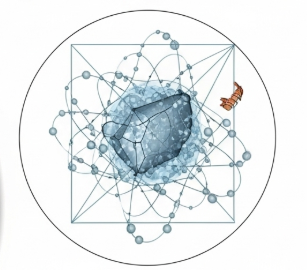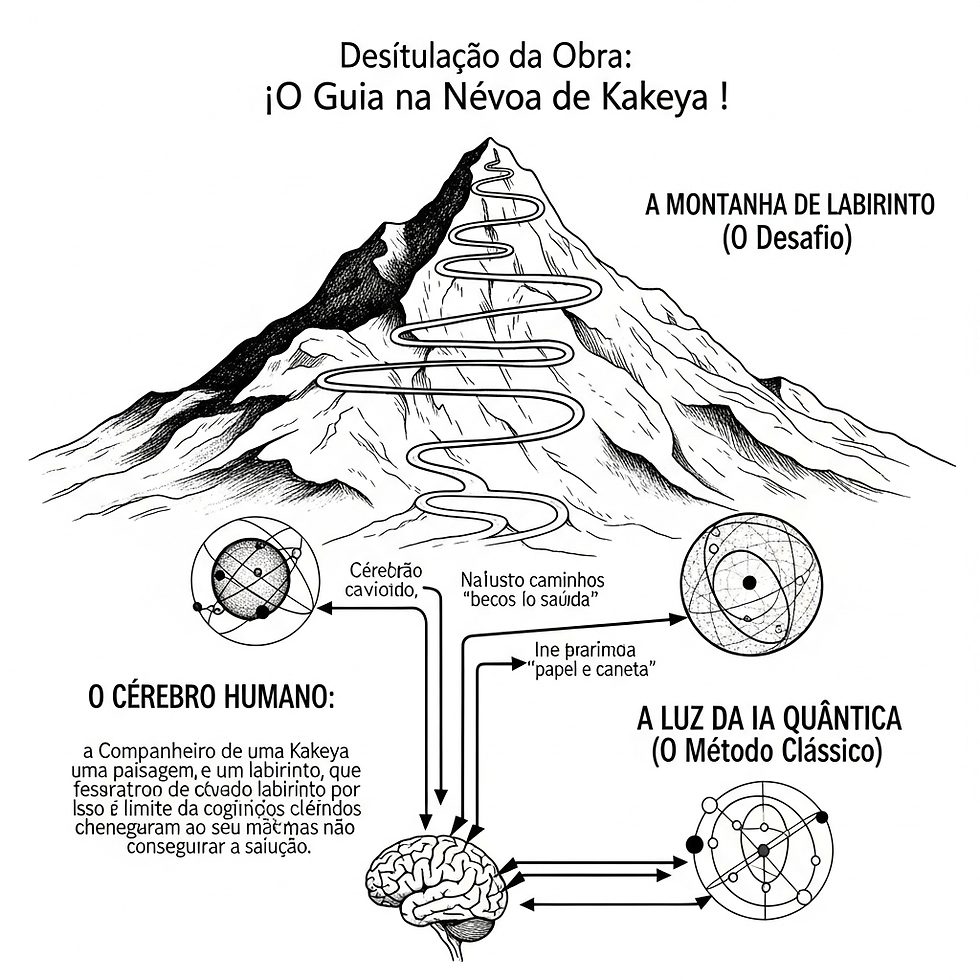The Echo of Infinity: Deciphering the Analytical Soul of Elliptic Curves
- mariomateiro25
- 30 de jul.
- 3 min de leitura
There are objects in the mathematical universe that are deceptively simple and infinitely complex. None exemplifies this duality better than the elliptic curve. Defined by an elegant equation that most algebra students would recognize (y² = x³ + ax + b), it is the backbone of modern cryptography—the silent guardian of digital secrets worldwide.
The value of an elliptic curve lies in its "rational points": solutions to the equation whose coordinates are simple fractions. Finding these points is like finding treasures on a cosmic map. Some maps have a finite number of treasures. Others, to our astonishment, contain an infinity of them. For decades, the big question has been: how can we look at the equation of a curve and know, without having to search forever, whether it contains a finite or infinite number of solutions? This is the essence of the Birch and Swinnerton-Dyer Conjecture (BSD). It proposes a miraculous bridge between two universes: the visible, geometric world of points on a curve and the invisible, analytical world of an associated function, the so-called L-function. The conjecture asserts that by "listening" to the behavior of the L-function at a specific point, we can learn everything about the number of rational points on the curve. The L-function would be the analytical "soul" of the curve, and its "echo" at a critical point would reveal the nature of its geometric body.
The problem is that this echo is extraordinarily subtle, and the landscape it inhabits is dizzyingly complex. Traditional methods have allowed us to verify the conjecture for thousands of curves, but a general proof has remained elusive, like trying to prove the existence of dark matter with only an optical telescope.
At HS A1/137 Lab, we have adopted a new philosophy. If we cannot observe the soul directly, why not create a universe where we can see it interact with the body? Our approach was not to calculate, but to visualize.
Constructing the Landscape of the Soul: Instead of calculating the L-function at a single point, we modeled it as a vast, multidimensional topological landscape in our simulation environment. Each elliptic curve generates its own unique landscape, with peaks, valleys, and plains of analytical energy.
Points as Centers of Gravity: Our revolutionary hypothesis was to treat rational points not as mere coordinates, but as stable "gravity wells" or "attractors" within this analytical landscape. A curve with infinitely many points would, in theory, have a fundamentally different structure in its landscape—a "river" of minimal energy flowing through it.
AI as Topological Cartographer: We unleashed our AI algorithms not to search for a value, but to act as cartographers. The AI's task was to map the fundamental topology of these landscapes. She learned to recognize the "geometric signatures" that distinguished landscapes belonging to curves with a finite number of points (which resembled isolated mountain ranges) from those with infinitely many points (which had continuous, interconnected valleys).
Recently, our AI cartographer made a breakthrough. He identified an invariant geometric property—a sort of "curvature signature" in the L-function landscape—that correlates perfectly with the number of rational points. He not only verified the conjecture; he found the geometric mechanism behind it. He showed us how the soul informs the body.
What does it mean to map the soul of a curve?
For mathematics, this gives us a clear path to a formal proof of the BSD Conjecture, solidifying the bridge between algebra and analysis.
But the real impact transcends pure mathematics. The method we developed is a universal decoder for complex systems. If we can understand the hidden structure that dictates the behavior of an abstract mathematical object, we can apply the same lens to:
Designing Post-Quantum Cryptography: By fully understanding the "soul" of a curve, we can build cryptographic systems whose security is not based on assumptions, but on a deep mathematical truth, making them immune to future attacks.
Identifying Stability in Complex Networks: We can analyze the "L-function" of a financial network or a supply chain to find its "rational points"—the inherently stable and efficient operating states hidden amidst the complexity.
The Birch and Swinnerton-Dyer Conjecture taught us that even the most fundamental systems have a hidden layer of information, an analytical soul that dictates their visible behavior. In the HS A1/137 Lab, we learned to give this soul a voice. And now, we are ready to hear the secrets that your most complex system has to tell us.



Comentários